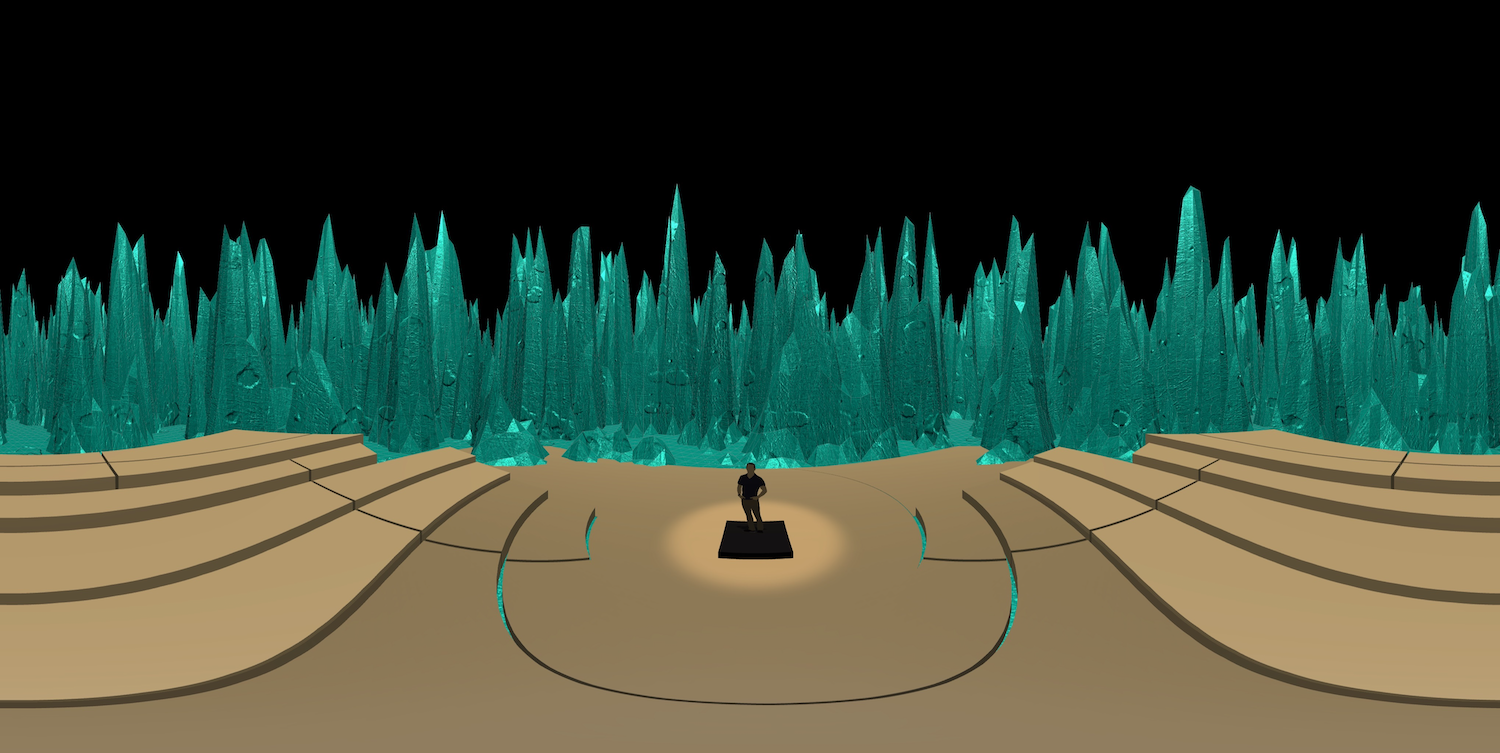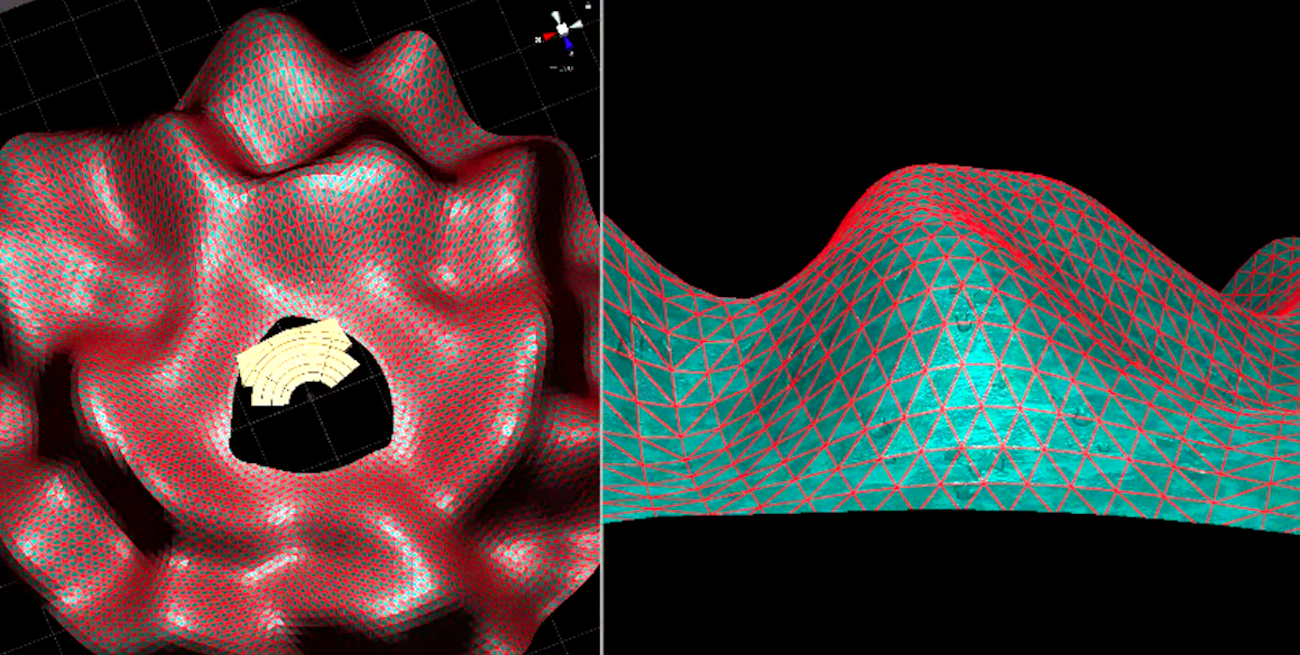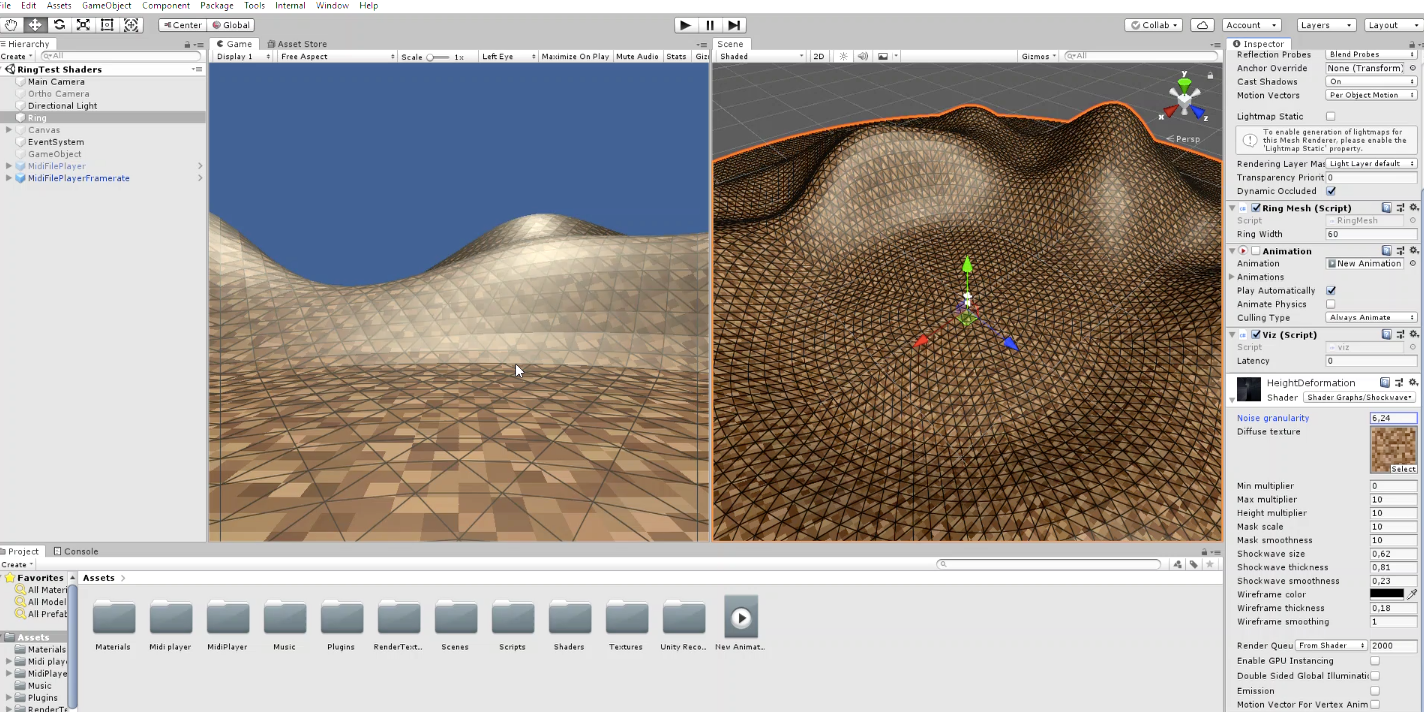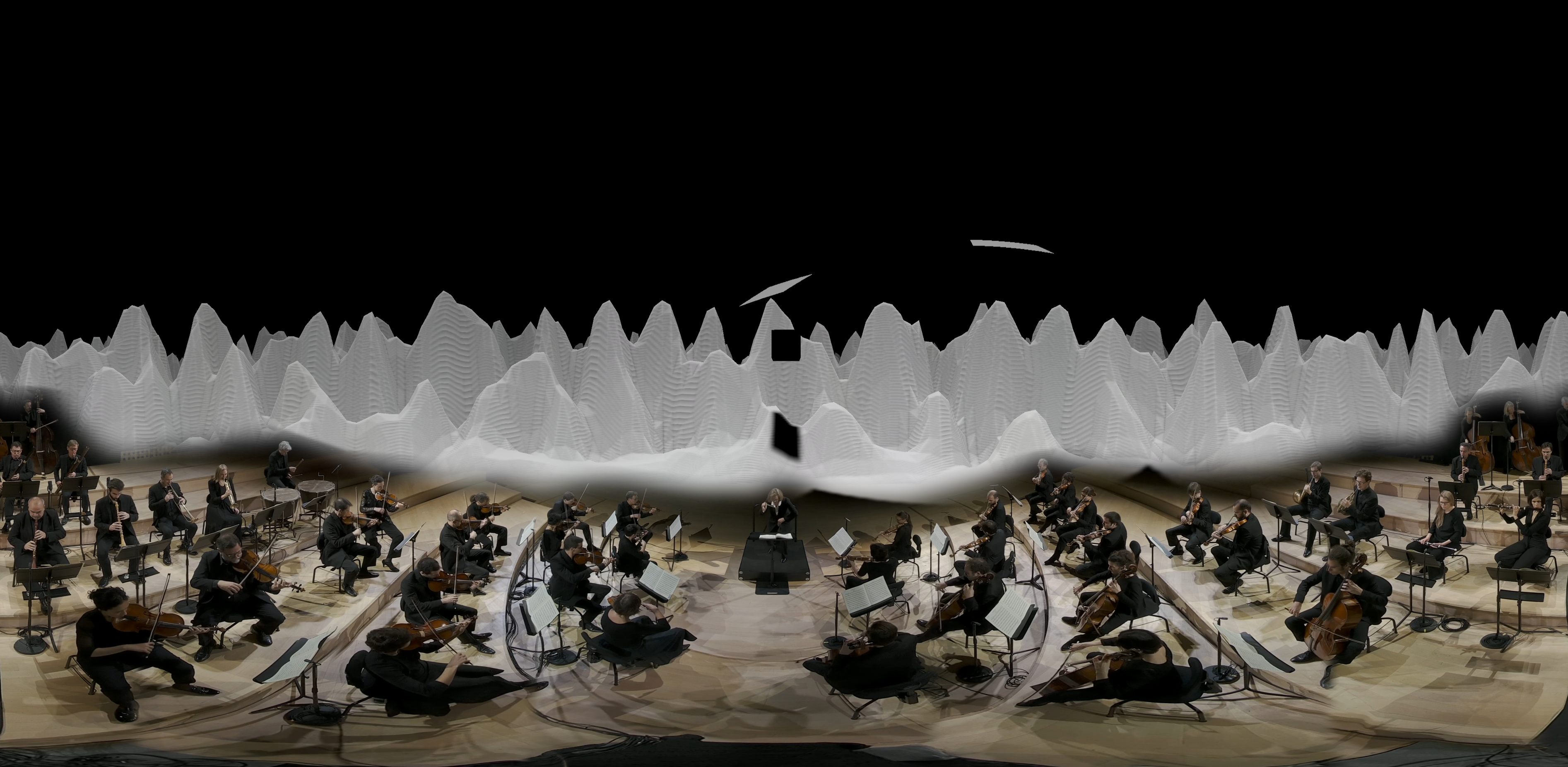BEETHOVEN – 5TH SYMPHONY
8′ 3D VR experience with generative graphic
Insula Orchestra / ARTE
Director : Ivan Maucuit
Co-producers : Jean-Stéphane Michaud / Ivan Maucuit
Production manager : Christophe Masson
Co-production : Caméra Lucida / Neotopy / ARTE
Production date : 2019
Conductor : Laurence Equilbey
VFX supervisor : Benjamin Petit / LTBL
Video post-production : Alexandre Regeffe / RSHIFT
Spatial audio mix : Thomas Dappelo
Director : Ivan Maucuit
Co-producers : Jean-Stéphane Michaud / Ivan Maucuit
Production manager : Christophe Masson
Co-production : Caméra Lucida / Neotopy / ARTE
Conductor : Laurence Equilbey
VFX supervisor : Benjamin Petit / LTBL
Video post-production : Alexandre Regeffe / RSHIFT
Spatial audio mix : Thomas Dappelo
Production date : 2019
A musical and technological journey
As part of the celebrations for the 250th anniversary of Beethoven’s birth, we wanted to think, with Insula Orchestra and its conductor Laurence Equilbey, about an immersive journey around the 5th symphony.
Quite immediately, I was very interested by research around the graphic scores of the first part of the 20th century, in particular that of Oskar Fischinger, Haubenstock and Boris Bilinsky.
For me, this is about « leaving the hand » to the computer code to create synthetic images. Once developed, we fed our specially built software with a set of data related to the original score. And then, go beyond the limited fields of sound and image alone, to generate a new immersive score.
Merging filmed images and digital animations perfectly synchronised with the music, the experience immerses us in the heart of this new score reacting to the slightest variation in the orchestra, building a dramatic dimension of the work.
A musical and technological journey
As part of the celebrations for the 250th anniversary of Beethoven’s birth, we wanted to think, with Insula Orchestra and its conductor Laurence Equilbey, about an immersive journey around the 5th symphony.
Quite immediately, I was very interested by research around the graphic scores of the first part of the 20th century, in particular that of Oskar Fischinger, Haubenstock and Boris Bilinsky.
For me, this is about « leaving the hand » to the computer code to create synthetic images. Once developed, we fed our specially built software with a set of data related to the original score. And then, go beyond the limited fields of sound and image alone, to generate a new immersive score.
Merging filmed images and digital animations perfectly synchronised with the music, the experience immerses us in the heart of this new score reacting to the slightest variation in the orchestra, building a dramatic dimension of the work.




